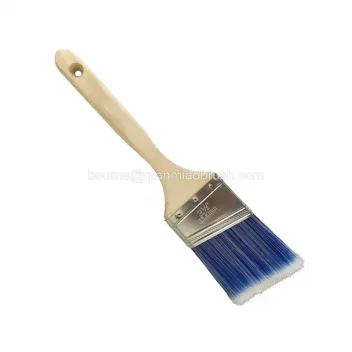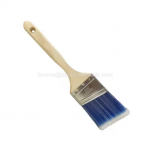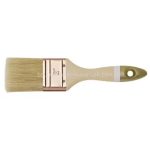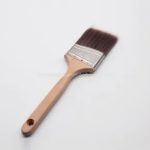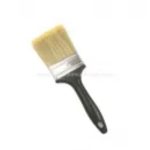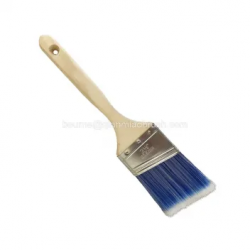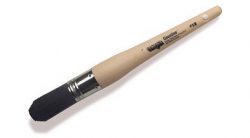How Do I Choose A Paint Brush?
With the dizzying array of paint brushes available at your local home center, paint store or hardware store, choosing the right paint brush can be overwhelming. But don’t worry! Here’s how to narrow down the different types of brushes and choose the right one for your project.
Choose the right size for your project.
If you are painting or varnishing woodwork, choose a smaller brush for more precise control. 1-1/2-inch wide brushes are ideal for most woodworking jobs. However, if you are painting trim that is wider than 3 inches, a wider brush (up to 2-1/2 inches) would be a better choice. If you are painting walls, you will be using the brush primarily for cutting. Professionals sometimes use 3 or 4 inch wide brushes for this purpose, but we think a 2-1/2 inch wide brush is ideal for most people who are DIY enthusiasts.
The only time you should consider using a brush wider than 3 inches is if you are painting wide siding, fences, paneling or other wide, flat surfaces.
Natural Bristle Flat Paint Brush
Choose the right shape.
Now that you’ve narrowed your choices by selecting synthetic or natural bristle brushes, and you’ve chosen the best width for your project, you just need to make more decisions. You’ll notice that some brushes have angled bristles and some have square bristles. If you plan to use the brush for paint trimming or cutting into the wall before rolling it, then we recommend that you choose a brush with an angled tip. The angled tip makes it easier to control the paint line, resulting in more accurate work. If you are painting a wide, flat surface, choose a square brush tip.
Match the bristle type to your finish.
Paint brushes are available with either synthetic bristles or natural bristles made from animal hair. If you’re using paint or varnish that can be cleaned up with water, then choose a brush with synthetic bristles. If you’re applying oil-based varnish or paint, a natural-bristle (Black China, Ox-hair Blend or White China) brush may be a better choice. You can use synthetic-bristle brushes for oil-based paint, but in most cases, natural bristles will provide a smoother finish. Avoid using a natural bristle brush to apply water-based finishes, though. The bristles will soak up moisture and become too soft.
Synthetic Filament Paint Brush
Synthetic brushes are available with nylon, nylon/polyester blends, or Chinex bristles. We recommend choosing either a nylon/polyester blen. A nylon/polyester blend provides a good compromise between softness, for a smooth finish, and stiffness, for better control.
If you’re buying a natural-bristle brush, you’ll also have a choice of bristle types. We won’t get into the different natural bristles available. But in general, spending more will provide you with a better quality brush. For varnishing, we think something like a Qianmiao China Bristle brush is ideal.
Spend a little more on a quality brush.
We know it’s tempting to buy a cheap brush and throw it away instead of bothering to clean it. This does make sense if you are using alcohol or an oil-based stain sealer for topical priming and the quality of the finish doesn’t matter and cleaning requires the use of solvents. Disposable, aka chip, brushes are perfect for this.
However, for most projects, you’ll be glad you spent the extra money on a quality brush. Better brushes hold more paint, provide smoother results, last longer, and are easier to clean. Cost is the easiest indicator of quality.
For more information about the paint brush for sales, welcome to contact us today or request a quote.
